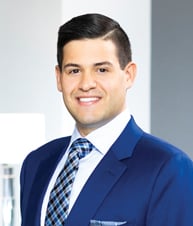A weekly summary of the precedential patent-related opinions issued by the Court of Appeals for the Federal Circuit and the opinions designated precedential or informative by the Patent Trial and Appeal Board.
Sunoco Partners Marketing & Terminals L.P. v. U.S. Venture, Inc., et al., Nos. 2020-1640, -1641 (Fed. Cir. (N.D. Ill.) Apr. 29, 2022). Opinion by Prost, joined by Reyna and Stoll.
Sunoco sued Venture for infringement of four patents relating to systems and methods for blending butane with gasoline. The district court held a bench trial, ultimately awarding Sunoco $2 million in damages, which it trebled to $6 million. Venture appealed challenging the district court’s rejection of its on-sale-bar defense, determination that it infringed two patents that the Federal Circuit has since held invalid, construction of two claim terms, and decision to enhance damages. Sunoco cross-appealed challenging the district court’s reasonable-royalty award and its decision to deny lost-profits damages.
As to Venture’s appeal, the Federal Circuit first reversed the district court’s determination that Venture’s on-sale-bar defense was negated by the experimental use doctrine. The Federal Circuit ruled that the transaction at issue “was an offer for sale made to commercially exploit the invention rather than primarily for experimental purposes.” The court therefore remanded for the district court to evaluate the ready-for-patenting prong of the on-sale bar.
Next, the Federal Circuit vacated the district court’s infringement judgment as to claims later determined to be invalid.
The Federal Circuit then turned to the district court’s construction of two claim terms and the associated judgment of infringement. The Federal Circuit affirmed, ruling that the term “vapor pressure of the butane stream” does not require an actual vapor-pressure measurement, and that the term “calculating a blend rate” does not tie certain steps together and thus does not require use of a claimed “first measurement.”
Lastly for Venture’s appeal, the Federal Circuit vacated the decision trebling the damages award. The court concluded that “the district court abused its discretion in enhancing damages, based on a clear factual error in the district court’s treatment of [a noninfringement opinion letter provided to Venture]—a ground that impacts its other enhancement grounds.” The Federal Circuit therefore vacated the enhancement determination and remanded for the district court to reassess enhancement in light of a correct view of the opinion letter and related testimony by the opinion counsel.
Turning to Sunoco’s cross-appeal, the Federal Circuit affirmed. Regarding the denial of lost-profits damages, the Federal Circuit ruled that the district court did not clearly err in finding that Sunoco failed to prove the amount of profit it would have made. Regarding the reasonable-royalty calculation, the Federal Circuit discerned no clear error or abuse of discretion in the award or in the district court’s rejection of Sunoco’s analysis, which, the district court had found, “suffer[ed] from the same flaw as [Sunoco’s] lost profits analysis.”
Auris Health, Inc. v. Intuitive Surgical Operations, Inc., No. 2021-1732 (Fed. Cir. (PTAB) Apr. 29, 2022). Opinion by Prost, joined by Dyk. Dissenting opinion by Reyna.
Auris petitioned for IPR of a patent owned by Intuitive directed to improved robotic surgery systems, which allow surgeons to remotely manipulate surgical tools. The Patent Trial and Appeal Board determined that Auris’s combination of two prior-art references disclosed every limitation of the challenged claims, but the Board found that a skilled artisan would not have been motivated to combine those references. The Board’s finding relied on evidence of general skepticism about the field of robotic surgery. Auris appealed.
The Federal Circuit vacated and remanded. The court explained that “the motivation-to-combine inquiry asks whether a skilled artisan not only could have made but would have been motivated to make the combinations.” The court continued that, “as to the ‘would have’ question, any need or problem known in the field of endeavor at the time of the invention and addressed by the patent can provide a reason for combining the elements in the manner claimed.” The court then held that “it follows that generic industry skepticism cannot, standing alone, preclude a finding of motivation to combine.”
The court clarified that “evidence of industry skepticism may play a role in an obviousness inquiry—but as a secondary consideration in a significantly different context.” And “even then, the evidence of skepticism must be specific to the invention, not generic to the field.” Here, the Board had “almost exclusively relied on evidence of general skepticism about the field of robotic surgery to find a lack of motivation to combine.” The Federal Circuit deemed that approach “inappropriate” and remanded to the Board to examine the sufficiency of the record evidence using the correct criteria.
Judge Reyna dissented because, in his view, the Board’s determination that Auris failed to show a motivation to combine was adequately supported by substantial evidence. He explained that the Board’s determination was “supported on multiple grounds and did not solely rest on a vague ‘general skepticism’ of robotic surgery.” Also, Judge Reyna expressed concern that “the majority opinion may reasonably be understood to announce an inflexible and rigid rule, namely that it is ‘impermissible’ for the Board to consider evidence of artisans’ skepticism toward robotic surgery in determining motivation to combine.” Judge Reyna stated that he is aware of “no authority for this assertion.”

